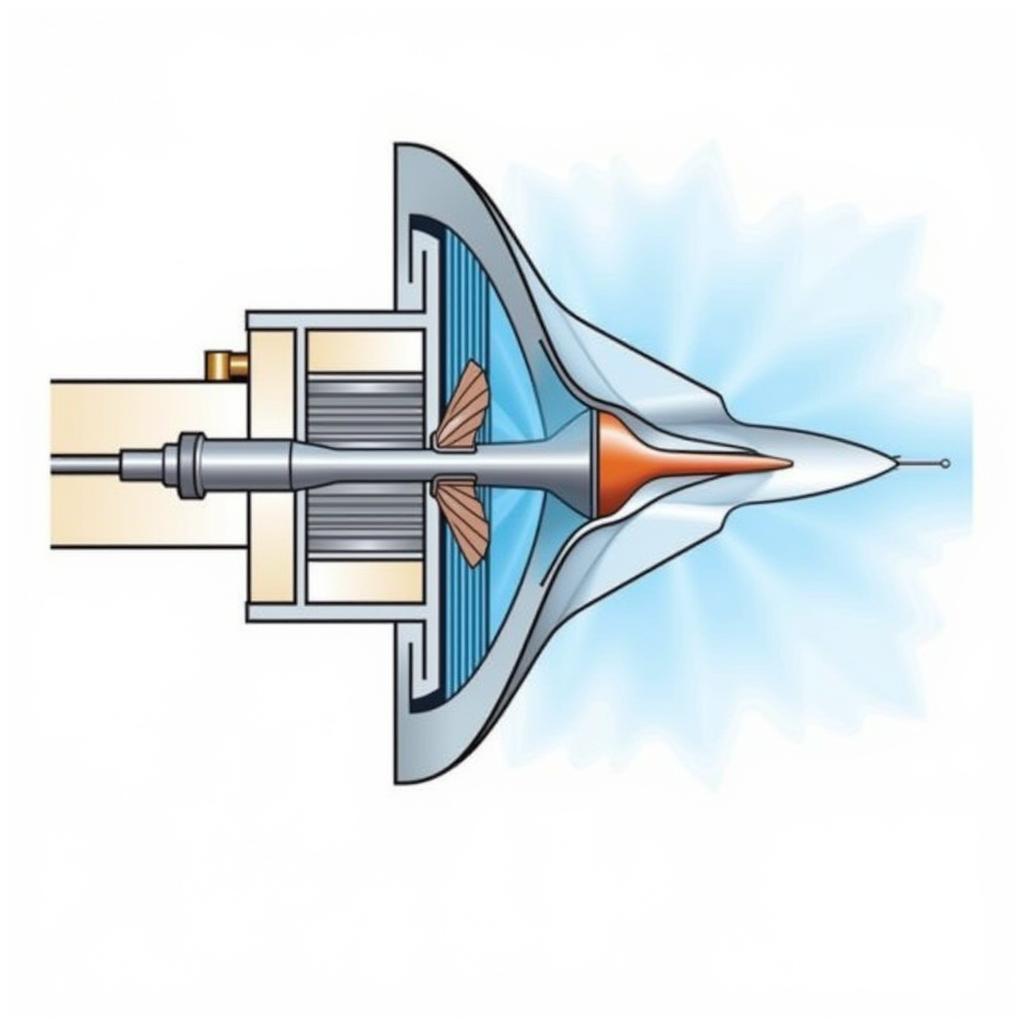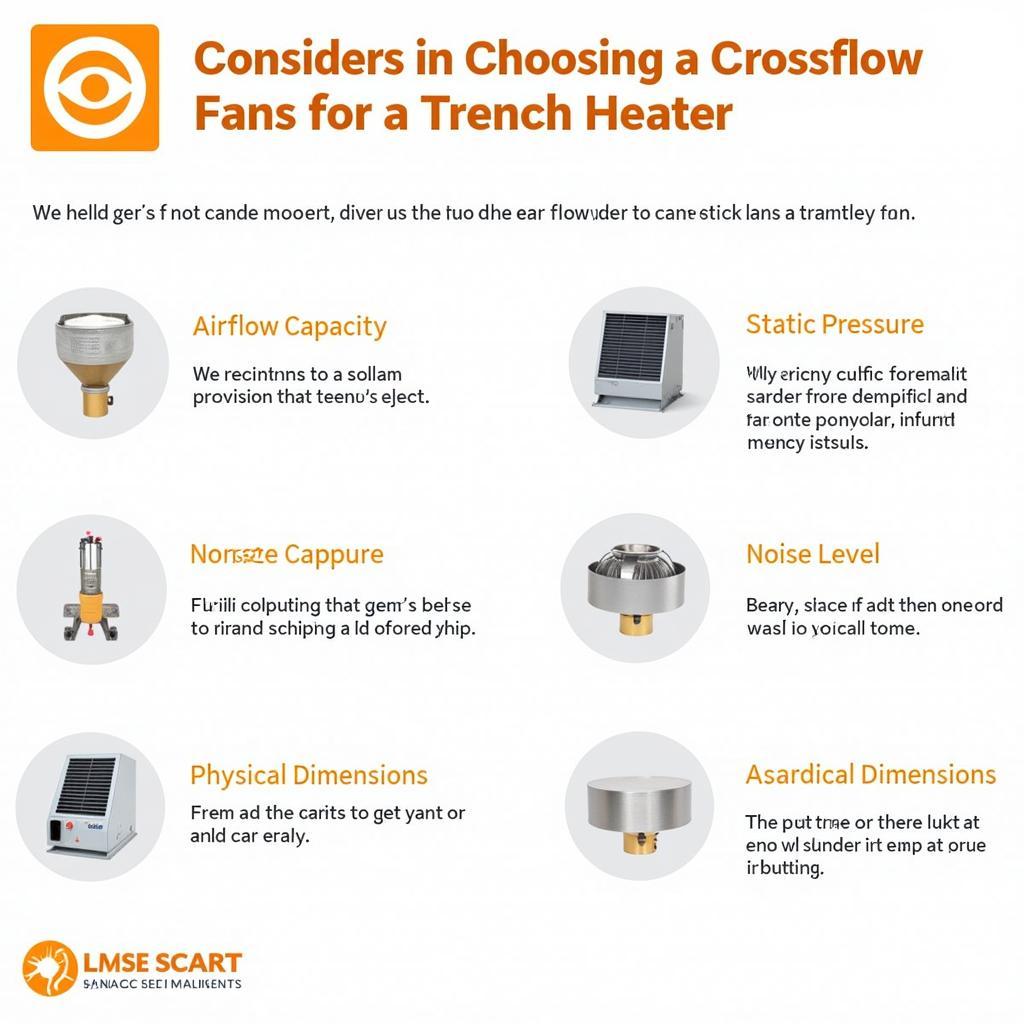A crossflow fan for a trench heater is a specialized fan designed to circulate air efficiently through a trench heater system. Unlike traditional axial or centrifugal fans, which move air in a single direction, crossflow fans create a long, narrow stream of air that flows perpendicular to the fan axis. This unique airflow pattern makes them ideal for trench heaters, allowing for even heat distribution and optimal performance.
Understanding Crossflow Fans and Their Advantages
 Crossflow Fan Mechanism
Crossflow Fan Mechanism
Crossflow fans, also known as tangential fans, are characterized by their cylindrical impeller with forward-curved blades. These blades are designed to draw air in from the sides of the fan and discharge it in a sheet-like pattern across the opposite side. This design allows for a compact fan unit that can deliver a significant volume of air over a long, narrow area, making them a perfect fit for trench heaters.
Here are some key advantages of using crossflow fans in trench heater systems:
- Uniform Heat Distribution: The unique airflow pattern ensures even heat distribution along the entire length of the trench heater, eliminating hot and cold spots.
- Space-Saving Design: Crossflow fans are compact and can be easily integrated into the slim profile of a trench heater, maximizing floor space.
- Quiet Operation: These fans operate relatively quietly, especially compared to other fan types, making them suitable for noise-sensitive environments.
- Energy Efficiency: Crossflow fans are known for their energy efficiency, as they can move a large volume of air with relatively low power consumption.
Factors to Consider When Choosing a Crossflow Fan
 Crossflow Fan Selection Factors
Crossflow Fan Selection Factors
Selecting the right crossflow fan is crucial to ensure the optimal performance of your trench heater system. Consider these essential factors before making a purchase:
- Airflow Capacity: Determine the required airflow based on the size of the trench heater and the heating requirements of the space.
- Static Pressure: The fan must be capable of overcoming the resistance to airflow within the trench heater system, including ductwork or grilles.
- Noise Level: Choose a fan with a low decibel rating for quiet operation, especially in residential or commercial settings.
- Physical Dimensions: Ensure the fan’s size and mounting options are compatible with your trench heater unit.
- Power Consumption: Opt for a fan with high energy efficiency to minimize operating costs.
Installation and Maintenance Tips
Proper installation and regular maintenance are essential to maximize the lifespan and efficiency of your crossflow fan for the trench heater.
- Follow Manufacturer Instructions: Always refer to the manufacturer’s installation guide for specific instructions and safety precautions.
- Ensure Secure Mounting: The fan should be securely mounted to prevent vibrations and noise during operation.
- Regular Cleaning: Periodically clean the fan blades and housing to remove dust and debris, ensuring optimal airflow.
- Inspect for Wear and Tear: Regularly inspect the fan for any signs of wear and tear, such as damaged blades or loose components.
Conclusion
A crossflow fan is an integral component of a trench heater system, ensuring efficient and even heat distribution. By understanding the factors to consider when selecting a fan and following proper installation and maintenance practices, you can enjoy the benefits of a comfortable and energy-efficient heating solution.


